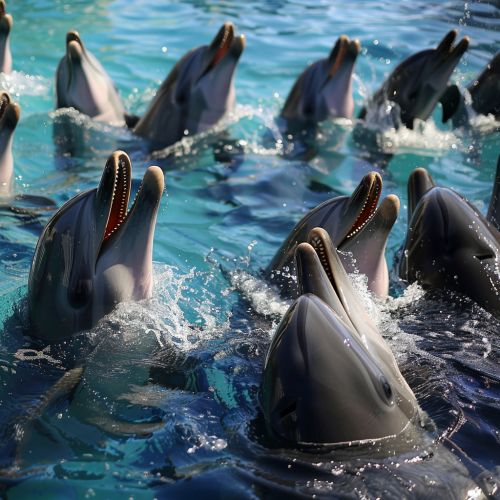Evolution of Communication in Cetaceans
Introduction
Communication is a fundamental aspect of social species, and cetaceans are no exception. These marine mammals, which include dolphins, whales, and porpoises, have developed complex communication systems to interact with each other. The evolution of communication in cetaceans is a fascinating topic, revealing how these creatures have adapted to their aquatic environment and social structure.


Evolutionary Background
Cetaceans are descendants of terrestrial mammals, and their transition to an aquatic lifestyle has significantly influenced their communication methods. Early cetaceans likely relied on visual and tactile signals, similar to their terrestrial counterparts. However, the aquatic environment posed new challenges and opportunities for communication, leading to the evolution of acoustic communication as the primary mode of interaction.
Acoustic Communication
Acoustic communication in cetaceans is incredibly diverse, ranging from the complex vocalizations of dolphins to the long-range songs of whales. These sounds are produced using specialized structures in the blowhole, known as phonic lips. The evolution of these structures has allowed cetaceans to produce a wide range of sounds, from low-frequency moans to high-frequency clicks and whistles.
Clicks
Clicks are short, intense sounds used by cetaceans for echolocation and communication. They are particularly common in dolphins, which use them to navigate, hunt, and interact with each other. The evolution of echolocation in cetaceans is a remarkable example of convergent evolution, as similar systems have evolved independently in bats and some bird species.
Whistles
Whistles are longer, tonal sounds used primarily for communication. They are often used to convey identity, location, and emotional state. Some species, such as the bottlenose dolphin, even have signature whistles that are unique to each individual, similar to human names.
Songs
Songs are complex sequences of sounds produced by some whale species. The most famous are the haunting melodies of the humpback whale, which can be heard over great distances. These songs are thought to play a role in mating and territorial displays, although their exact purpose remains a topic of ongoing research.
Visual Communication
Despite the dominance of acoustic communication, visual signals also play a role in cetacean communication. These include body postures, leaps, slaps, and other surface behaviors. Many of these behaviors are thought to have social functions, such as establishing dominance or attracting mates.
Tactile Communication
Tactile communication is another important aspect of cetacean interaction. This includes behaviors such as rubbing, nuzzling, and physical contact during social interactions. Tactile communication is particularly important in mother-calf bonding and during mating.
Future Research
The study of cetacean communication continues to be a vibrant field of research. Future studies may reveal more about the complexity of these communication systems and how they have evolved over time. Understanding cetacean communication can also provide insights into the cognitive abilities of these remarkable creatures, and contribute to their conservation and management.
